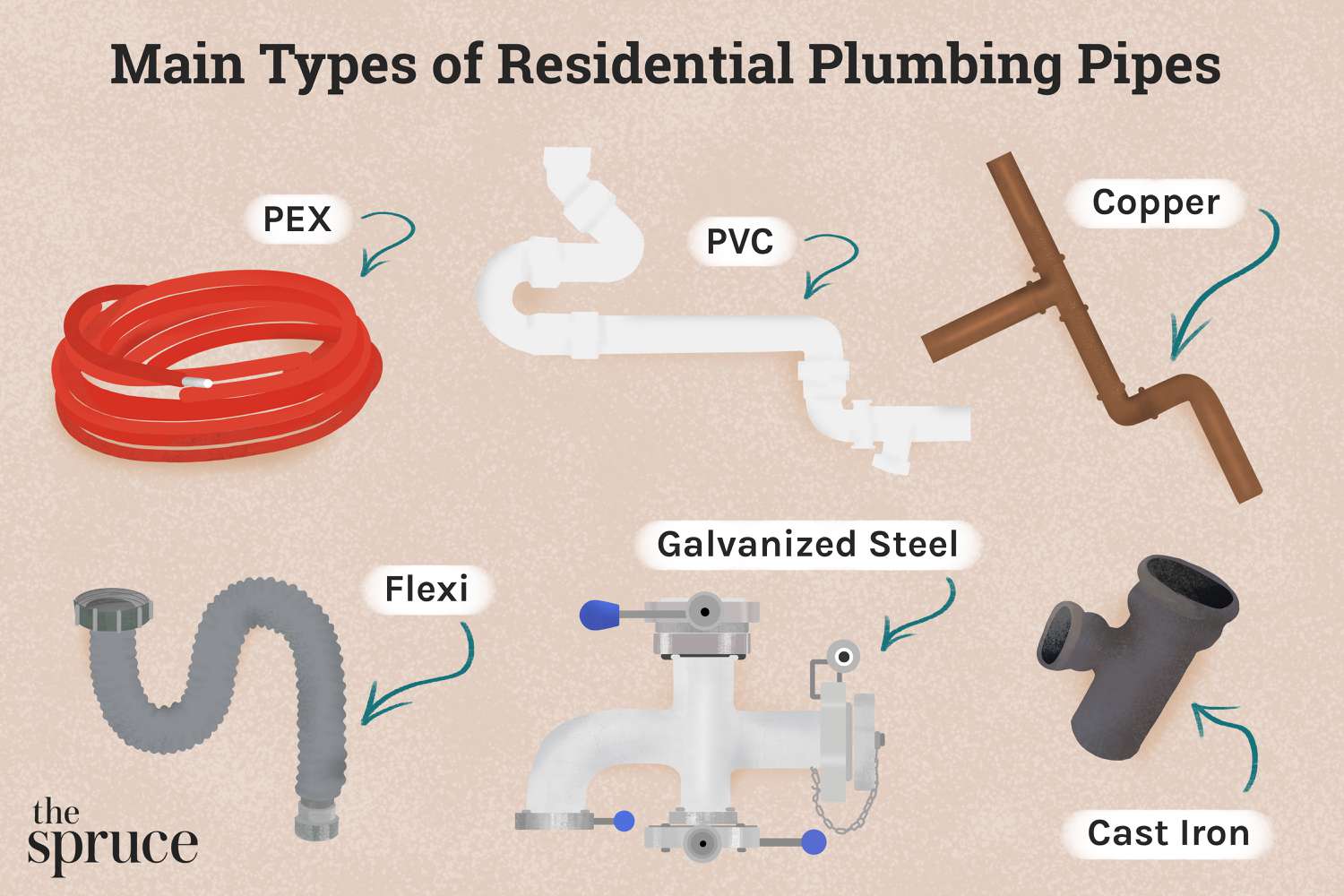
When it comes to home maintenance, understanding the different types of plumbing pipes can save you time, money, and headaches. Whether you’re planning a renovation, dealing with a leak, or simply curious about what’s behind your walls, knowing your pipe materials helps you make informed decisions and communicate effectively with professionals. Here’s a guide to the most common plumbing pipe types found in modern homes.
1. Copper Pipes
Copper has been a staple in plumbing for decades. It’s durable, resists corrosion, and can handle both hot and cold water. Copper pipes are often used for water supply lines and are prized for their longevity—sometimes lasting over 50 years. However, copper can be more expensive than other materials and may require professional installation due to soldering.
2. PEX Pipes
PEX (cross-linked polyethylene) is a flexible, plastic piping that’s become increasingly popular in recent years. It’s easy to install, resistant to scale and chlorine, and can handle both hot and cold water. PEX is ideal for retrofits and new construction alike, as it can bend around corners and fit into tight spaces. It’s also less expensive than copper and doesn’t require soldering.
3. PVC Pipes
PVC (polyvinyl chloride) pipes are commonly used for drain, waste, and vent lines. They’re lightweight, easy to cut, and resistant to corrosion and chemicals. PVC is not suitable for hot water supply, but it’s a cost-effective choice for many drainage applications. Always check local codes, as some areas restrict PVC use for certain purposes.
4. CPVC Pipes
CPVC (chlorinated polyvinyl chloride) is similar to PVC but treated to withstand higher temperatures. This makes CPVC suitable for both hot and cold water supply lines. It’s easy to install and more affordable than copper, but it can become brittle over time, especially if exposed to direct sunlight.
5. Galvanized Steel Pipes
Galvanized steel was once the standard for water supply lines but is now largely outdated. These pipes are strong but prone to corrosion and mineral buildup, which can restrict water flow and affect water quality. If your home has galvanized pipes, consider replacing them, especially if you notice rusty water or low pressure.
6. ABS Pipes
ABS (acrylonitrile butadiene styrene) pipes are black plastic pipes used mainly for drain, waste, and vent lines. They’re similar to PVC but slightly more durable in cold temperatures. However, some building codes restrict ABS use, so always check local regulations.
7. Cast Iron Pipes
Cast iron is heavy and extremely durable, often found in older homes for drain and waste lines. It’s excellent at reducing noise from flowing water but can rust and corrode over time. Many modern homes now use PVC or ABS instead.
Choosing the Right Pipe
The best pipe for your home depends on your needs, budget, and local building codes. For water supply, copper, PEX, and CPVC are common choices. For drainage, PVC and ABS are popular. If you’re unsure, consult a licensed plumber—they can recommend the best material for your specific situation.
Tip: If you’re planning a renovation or repair, take the opportunity to upgrade old pipes to modern, more efficient materials. This can improve water quality, reduce leaks, and add value to your home.
Need help with your plumbing?
Contact a professional to inspect your pipes and recommend the best solutions for your home. Understanding your plumbing pipe types is the first step to a safer, more efficient household!
